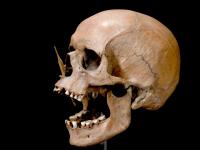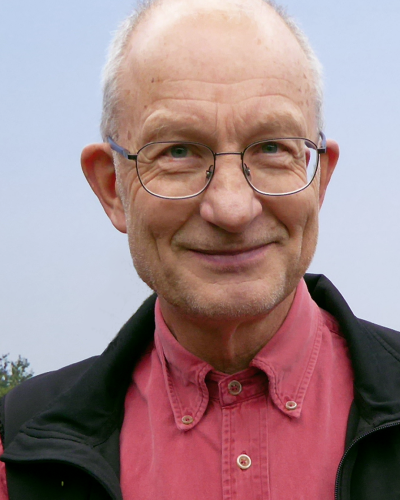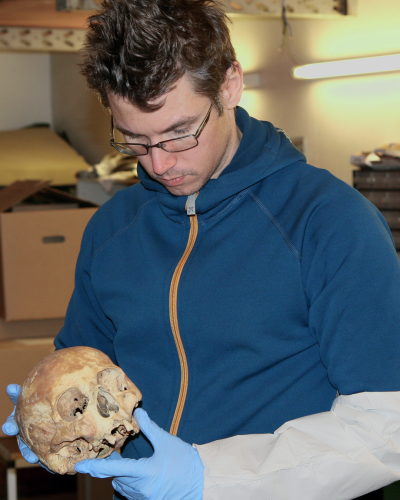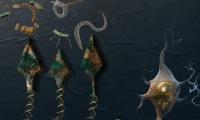MEET THE NEW ANCESTORS

The Porsmoseman, Stone Age
Denmark has undergone two hitherto unknown near-total population replacements since the Last Ice Age. The genetic impacts of these events are still seen in the DNA of present-day Scandinavians.
An extraordinarily detailed account of human prehistory is made for a single country through analyses focusing on the comprehensive ancient genomic dataset for the modern-day country of Denmark. This has major implications as Denmark was until now relatively unstudied in terms of ancient human genomes. For the first time, an extremely high-resolution chronology of the changes in genetic ancestry, physical characteristics, culture and environment have been assembled, generating unprecedented insights into who the previous occupants of Denmark were, and how they lived.
By retrieving preserved DNA from archaeological bones and teeth, scientists have been able to sequence the genomes of 100 ancient human individuals from across the timeline of the early prehistory of Denmark, analysed in this landmark study (100 Ancient Genomes Show Repeated Population Turnovers In Neolithic Denmark).
The ancient human samples encompass a period of 7,300 years from the Mesolithic through the Neolithic into the Early Bronze Age. Here, the oldest of the studied skeletal remains are those of the Koelbjerg Man, who lived some 10,000 years ago. His remains comprise the earliest known in Denmark, and the oldest bog body in the world.

‘Danish archaeologists often refer to “our prehistory” and “our ancestors” with the implication that present-day so-called “ethnic Danes” are the descendants of an indigenous population native to Denmark, at least since it became habitable 14-15,000 years ago in the Last Ice Age. That claim is no longer valid. In fact, the tall, light-skinned ancestors of the Danes did not reach Denmark until 4,850 years ago. These people were largely descended from herders who had migrated from the Southeastern end of Europe,’ says archaeologist Dr. Anders Fischer, co-author of the study.
For well over four decades, Dr. Fischer has been researching Mesolithic and Neolithic cultures, notably in their transition some 6,000 years ago from a hunter-gatherer society to a farming culture. Dr. Fischer is affiliated with the Lundbeck Foundation Geogenetics Centre at the University of Copenhagen (UCPH) and holds a visiting professorship at Kiel University.
The new population that emerged in Denmark 4,850 years ago in the Late Neolithic was significantly influenced by the rapid spread of Yamnaya ancestry across Europe - the Yamnaya were nomadic herders with wheeled carts and wagons living in the Pontic-Caspian Steppe. During their migrations west across Europe the herders mixed with east European farmers and gave rise to the Corded Ware Culture, the local variant of which in Denmark was the Single Grave Culture.
This “Yamnaya-farmer gene mix”, which entered Denmark by 4,850 years ago, characterised the genetic profile of the Single Grave Culture, and have to a great extent formed the genepool of Denmark to this day. And they settled for good by completely replacing the local Funnel Beaker Culture, stresses Professor Eske Willerslev, who led all four Nature papers:

Prof. And Director, Lundbeck Foundation GeoGenetics Centre, Globe Institute, University of Copenhagen, Denmark, Prof,. University of Cambridge, UK
‘Their genes remained. In Denmark and the rest of Scandinavia and in much of the rest of Northwestern Europe, genetically speaking, we are essentially Yamnaya to this day. We also know this from the studies of the ancient DNA profiles.’
Before the influx of Yamnaya-related ancestry in Late Neolithic Denmark, the territory had belonged to a farming population of ‘strikingly different appearance and origin’, says Fischer:
‘And 5,900 years ago, the land belonged to a third group, namely hunter-gatherers. Both of these population turnover events were rapid, and with virtually no descendants of the predecessors. For an archaeologist, that’s a profound discovery,’ says Fischer, who stresses that the details of how these two population turnovers actually occurred in the space of a mere millennium are not revealed by the study.
‘What we do know is that in both cases, the existing populations – first the hunter-gatherers and, next, the descendants of Anatolian farmers – were displaced. Perhaps the migrants carried diseases that wiped out the former inhabitants. Or perhaps they fell victim to violence. We don’t know. But looking at prehistoric Denmark, I see a great deal of bloodshed,’ muses Fischer.
A COLOSSAL UNDERTAKING

Prof., Curtin University, Australia, Associate Prof., Lundbeck Foundation GeoGenetics Centre, Globe Institute, University of Copenhagen, Denmark
When attempting to extract DNA from ancient skeletal remains unearthed in present-day Denmark, highly optimised ancient DNA methods are required emphasises co-author of the study, Professor Morten Allentoft:
‘A skeleton buried for so long will inevitably have been contaminated by soil microbes and exposed to water, and that process degrades DNA. This is why the best-preserved DNA in specimens of that age is found in the teeth, and in the hardest bone in humans and other mammals, the petrous bone, which is located in the inner part of the skull, where it protects the inner ear.’
Professor Allentoft co-led the collection of all the specimens and the analysis of ancient human DNA from the Eurasian region presented in the four Nature articles. An evolutionary biologist and professor at Curtin University, Australia, Allentoft is also affiliated with the Lundbeck Foundation Geogenetics Centre at the University of Copenhagen, where he has collaborated closely with Professor Willerslev since 2011.
All the laboratory analysis of the ancient DNA was performed at the University of Copenhagen, says Professor Allentoft: ‘First we extracted DNA from each specimen in our dedicated ultra-sterile labs, and then we sequenced all the genomes ourselves at our sequencing centre. This was a colossal undertaking, and nearly drove us crazy at times.’

Lundbeck Foundation GeoGenetics Centre, Globe Institute, University of Copenhagen, Denmark
Associate Professor Martin Sikora from the Lundbeck Foundation Geogenetics Centre and The Globe Institute at UCPH is also a co-author of the study. He specialises in population genetics, analysing DNA variation within and among populations. Using a mathematical model for imputing missing information based on data from millions of complete DNA profiles from present-day individuals, Dr. Sikora was able to carefully trace the changes in the ancient gene pools through space and time.
This made it possible to follow human migration events that had occurred since the Mesolithic, and also to discover how migrations impacted Northwestern Europe, including Denmark.
‘One of the surprises for me was the rapid rate of population displacement,’ says Dr. Sikora: ‘Our analyses show that the hunter-gatherers virtually vanished within a few centuries in Denmark and the rest of Northwestern Europe. Denmark experienced two population turnovers within just 1,000 years. That’s dramatic.’

Part of the theme